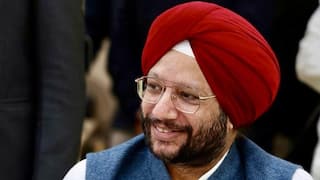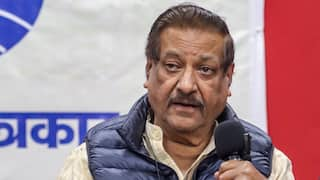How India Can Strengthen India's Healthcare Workforce To Meet Future Health Needs
The demand for healthcare workforce has outpaced its supply, leading to a gap in quality healthcare services across the country.

The Covid-19 pandemic showed how India's healthcare workforce became the first line of response against the crisis. However, the pandemic also laid bare how, besides inadequate infrastructure, the severe shortage of health workforce posed a significant challenge for the government.
In fact, to bolster the ranks of the stretched healthcare system due to surge in Covid cases during the second wave, the government had allowed doctors preparing for post-graduation entrance tests, final-year medical students, hospital interns and BSc-qualified nurses to be pressed into service.
This shows the existing gap between required and available healthcare workforce in India, considered a pharmaceutical hub.
A FICCI and KPMG report, titled 'Strengthening healthcare workforce in India: the 2047 agenda', has noted that this shortage of healthcare workforce is expected to grow significantly in the coming decades. The issue appears more stark with India expected to overtake China as the most populous country in coming years.
The report has cited population growth, ageing, changing epidemiology, increased prevalence of non-communicable diseases (NCDs) that require a lifetime of care and management as the major reasons. Other reasons include low density and skewed distribution of doctors, nurses and midwives and migration of healthcare workforce, especially nurses.
The healthcare sector, the fourth largest employer in India, provides direct employment to more than 6.6 million people, the report said. However, the demand for healthcare workforce has outpaced its supply, leading to a gap in quality healthcare services across the country.
A look at the data buttresses the point. Compared with the WHO threshold of 44.5 doctors, nurses, and midwives per 10,000 population, India has a density of 33.5 per 10,000 population. This is significantly lower than many other developed nations such as the US (183), UK (118.6), Brazil (97.1) and China (53.1).
The FICCI and KPMG report also mentions that India has a shortfall of 137,559 doctors, with nine doctors per 10,000 population. WHO recommends a density of 10 per 10,000 population.
Similarly, 24.5 nurses and midwives are available per 10,000 population in India. There is a shortfall of 1.37 million nurses and midwives. WHO recommends 34.5 per 10,000 population.
With the Centre shifting its focus on building an efficient healthcare workforce, the report has suggested six levers to make it more robust and future ready.
ALSO READ | What Steps Modi Govt Is Taking To Make Medical Education Future Ready
Incentivisation And Social Safeguards
Several instances of health workers being manhandled and thrashed by relatives of patients during the pandemic came to light, prompting the government to bring an ordinance to protect them from violence. In recent years, there has also been a rise in strikes by health professionals due to unsafe working conditions and low salary.
To prioritise the wellbeing of the health workforce, the report recommends incentives like stipends during internships, easier access to personal loans at lower than market rates, free life and occupational hazard insurance, free medical insurance, reservations for rail, travel, preference for children's admissions.
For example, Thailand has used rural recruitment, training in rural health facilities, hometown placement and contractual agreements to improve the distribution of nurses, midwives and doctors.
Additionally, students receive highly subsidised education as well as free clothing, accommodation, food and learning materials as incentives.
"Financial incentives in the form of location-based incentives or hardship allowances for medical, nursing and paramedical professionals in remote areas based on their vulnerability, will help bridge the gap of skewed resource distribution," the report further notes.
Embedding Governance Mechanisms And Frameworks
The FICCI-KPMG report calls for setting up of an "Empowered Group on National Healthcare Workforce" to bring reforms and make plans to meet future needs. It recommends an accreditation system at the national level, activating new cadres for gate-keeping and shouldering global responsibilities of the workforce, launching focused campaigns to attract talent and developing standard treatment guidelines for quality control.
Upskilling Of Healthcare Workforce And Faculty
"In the current era of rapid medical advancements, yesterday's best practice may be obsolete tomorrow," the report notes. To be better equipped in delivering healthcare in the 21st century, the report suggests adoption of new innovations and tools besides strengthening the learning approaches for both the students and faculty.
To take this forward, the report calls for establishment of a National Health Skilling Platform (NHSP) along with healthcare skilling centres across districts. It also suggests developing a 'National Healthcare Faculty Development Programme'.
"India can construct an epidemiologic model for healthcare workforce planning that considers the health needs of the population, disease burden and population growth," the report further says.
Monetisation Of Healthcare Educational Infrastructure
The report stresses on an urgent need to resolve long-standing issues facing medical education in our country, suggesting the need for financial assistance and incentivisation to institutes in the form of financial aid or subsidies to the private sector.
Inadequate government seats in terms of population and exorbitant fees to pursue medical education in private are some of the challenges facing the country today.
"Healthcare companies should be encouraged to channel their CSR funds to provide specialist training to doctors," the report recommends.
Leveraging Digital Universities And Institutes
The Covid-19 pandemic has set into motion a kind of digital revolution in India. However, only 38 per cent of households in India are digitally literate.
During the pandemic, the government effectively used apps like the Arogya Setu and CoWin to reach out to people and apprise them about infected persons nearby, vaccination availability and Covid precautions, demonstrating the importance of digital health literacy.
With Prime Minister Narendra Modi launching the Ayushman Bharat Digital Mission, which aims to provide digital health IDs for all Indian citizens, the FICCI report calls for holistic effort and mission mode programmes to drive digital health literacy.
The report suggests use of e-learning platforms such as SWAYAM and DIKSHA in digital universities to provide teachers with a structured, user-friendly, rich set of assistive tools for monitoring progress of learners.
Potential Of Emerging Technologies
The report calls for a funding scheme to set up a simulation lab across medical education institutes for creating a future-ready healthcare workforce. "The metaverse can also be explored to provide experientially, embodied skilling opportunities using real-world scenarios and high-pressure situations where students can make mistakes without consequence," the report further notes.
Related Video
India@2047 Summit: Modi Calls for Innovation, Reforms, and National Resolve






































